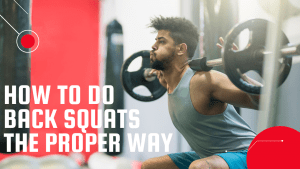How do you do a low seated cable row and muscles worked
Injuries happen most of the time, and more often than not, they are unexpected. If you are someone who constantly works out, whether at home or the gym, accidents that prevent you from being mobile can temporarily halt your active lifestyle and put a dent in your fitness progress.
More importantly, if you are a fan of deadlifts and back squats, being injured will seriously stop you from doing these exercises because lifting will become too much of a struggle, and forcing yourself to do either of them could even worsen your situation.
Lucky for you, there is an exercise similar to the deadlift and the back squat in terms of the muscles engaged: the low seated cable row.
What is a low seated cable row?
The low seated cable row is a strength training exercise that helps build upper body strength by working the muscles on the back and upper arms. Its basic movement involves pulling a weighted handle on a seated cable row machine.
A strong upper body has a multitude of benefits and is essential in the accomplishment of day-to-day activities, which is why incorporating the seated cable row in your workout routine is not such a bad idea. Moreover, having a strong upper body also improves posture and reduces the risk of injury.
How to do a low seated cable row
So now that you know the basic premise of the seated cable row, here is a simple step-by-step guide on how to properly do it.
- Begin by sitting upright on the bench and planting your feet firmly on the ground or the footpads with your knees bent.
- Extend your arms to grab the handle or cable, then pull the handle or cable backward towards you and into your lower stomach area.
- As you perform this movement, keep your elbows tucked in at the sides while engaging your back muscles and bracing your core to pull the weight.
- Return to the starting position in a controlled manner by slowly extending your arms out.
- Repeat. Do this exercise for at least 3 sets with 8-12 repetitions each, depending on the weight.
When doing seated cable rows, focus on the quality of the movement instead of the number of reps. If you are doing this exercise as a beginner, it is more important that you work on getting your body used to the form and motion first, and move on to more sets and reps only when you feel that the exercise is getting easier to perform.
Moreover, don’t get tempted to increase the weights just because you think lifting them will be easier since you are in a sitting position. That is not the case and you will only hurt your back and shoulders if you do so.
What are the muscles at work in this exercise?
The seated cable row works many muscles in one controlled movement. These include the latissimus dorsi which spans the lower and middle back, running from the spine connecting to the upper arms and then down to the top of the hip bone; the teres major which runs from inside the lower edge of the shoulder blade and also connects to the upper arm; the trapezius which runs from the base of the skull to the middle portion of the back then up to both ends of the collarbone.
But while the primary movers during this exercise are the muscles mentioned above, other muscles are also recruited to assist you throughout the movement. These are the rhomboids, erector spinae, rear deltoids, biceps, and forearms. Even the hamstrings and gluteus maximus are working during a seated cable row, although to a lesser degree.
The exercise also requires you to brace your abdominal muscles to maintain proper form, and doing this with a straight back is similar to the form you position yourself into during deadlifts and back squats.
With these muscles at work, the seated cable row can be considered a compound exercise since it engages several muscle groups all at once. However, the one muscle group that you should refrain from relying on too much during this exercise is the biceps.
You will know you are using too much of your biceps when you feel the burn there and not on your back. To avoid this, you may want to use grip attachments instead; they help prevent bicep activation during the exercise, allowing you to focus on using your back strength instead of your bicep and forearm strength.
Benefits of the low seated cable row
If you are waiting for a sign to include the seated cable row in your back workout routine, this is it. But aside from a strong upper body, what else is good about seated cable rows?
A happy lower back
The seated cable row provides less stress on the lower back compared to other exercises that utilize the back such as deadlifts, back squats, and bent-over rows. This makes the exercise ideal for people trying to get back on track while recovering from injuries.
More tension
Movements involving cable attachments tend to provide more constant tension throughout the exercise, and more tension equals more muscle activation.
Better functionality and efficiency
The lats are responsible for the downward movement of the upper arms and the inward rotation of the shoulders, while the trapezius assists in overhead pushing and drawing the shoulder blades and arms together. In essence, working these muscles will result in a strong upper body which, in turn, will make you more functional and efficient in your daily tasks.
Visually pleasing back
Aside from a strong back, the seated cable row can also give you a more well-defined physique. Ever wanted to have that sculpted, V-shaped back? That appearance is because of thick and wide lats, which is achieved by consistently working your back muscles hard.
With the seated cable row, you can build both the thickness and width of your back at the same time, giving it a proportional look. That V-shape also creates an illusion of a smaller waist, drawing attention to your chest and making you look tall and confident.
Low seated cable row mistakes you should avoid
Just like any other exercise, you need to perform the seated cable row with proper form and movement to get optimal results.
Unstable elbows
Most people move their elbows along with the movement, making it go up and out. But you should not be doing the pulling motion that way because it engages the biceps. Pin your elbows to the sides to engage the back muscles instead.
Shoulders too far forward
When you row, retract your shoulders and keep them down and steady. If you bring your shoulders near your ears too much, like you are shrugging, you will place too much tension on your traps instead.
Slouching
To avoid going into this position, engage your abdominal muscles instead and keep your spine straight. You need to maintain a neutral back throughout the exercise to avoid back injuries.
Rocking too much
You will not feel any burn to the muscles you are targeting if you let your torso go with the motion. To stabilize your torso, brace your abdominal muscles during the exercise instead.
Going too fast
The seated cable row is not an exercise that requires explosive and jerky movements. To fully activate your muscles, perform each repetition in a controlled manner. Remember, quality over quantity.
Incomplete range of motion
This normally happens when you put on too much on the weight stack. For you to be able to lift the heavy load, your arms and elbows compensate by not going through the full range of motion. But if you want to get optimal results, you should not be doing half reps. While rowing that way enables you to lift more, partially extending your arms will not make the most out of your back muscles.
Other cable row variations
One-arm cable row
Doing this cable variation forces one side of your body to do all of the work. To begin, put one hand on your side then hold the handle with the other. Make sure that your arm is fully extended in front of you. Next, bring the handle towards you by pulling it to just below your navel. As you do this, avoid rotating your torso. Resisting such movement will not only make you perform the exercise better but also work your core harder than the regular seated cable row. Lastly, return to the initial position in a controlled manner.
Seated face pull
The face pull is another great cable machine exercise that will work your back and shoulders. It is usually done while standing, but the seated version of the exercise allows you to perform the move with more weight. Set up a cable machine with a double-rope handle on the high attachment. Hold the attachment in both hands with an overhand grip and your arms outstretched in front of you. Pull the handle towards you so the two rope handles go either side of your face, then return to the starting position, maintaining tension in the cable.



